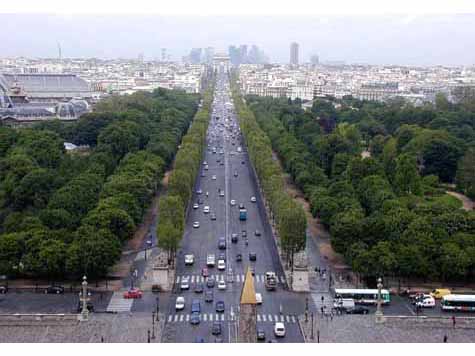 |
|||||||||
|
T h e S e v e n R o l e s
o f t h e U r b a n S t r e e t Tr e e |
|||||||||
 |
|||||||||
|
Duany Plater-Zyberk & Co.
1) Define the space of the street.
This particularly applies to streets that are too wide for the height of the buildings, streets with holes in the street wall, or suburban streets where buildings are too far apart to contain the space of the street. Mature trees provide canopy.2) Define the pedestrian space. 3) Calm traffic and protect the pedestrian from cars. Aided by parked cars.4) Filter the sunlight. Deciduous trees, unlike evergreen or palm, serve different functions in the summer and winter. Through photosynthesis, trees lower city temperatures in the summer and change carbon dioxide into oxygen.5) Bring order to the street. Trees should be laid out with regular geometries, repetition and rhythm, consistent sizes and alignment.6) Visually soften the streetscape. And at some times of the day, the shadows are as beautiful as the trees.7) Introduce the beauty and life of nature. Living plants contrast with the buildings, and in many parts of the world introduce seasonal change, color and fragrance. |
|||||||||
|
· Blog · Architecture · Urbanism · Books ·
Woodwork · Education · Resume · Previous Month Veritas et Venustas |
|||||||||